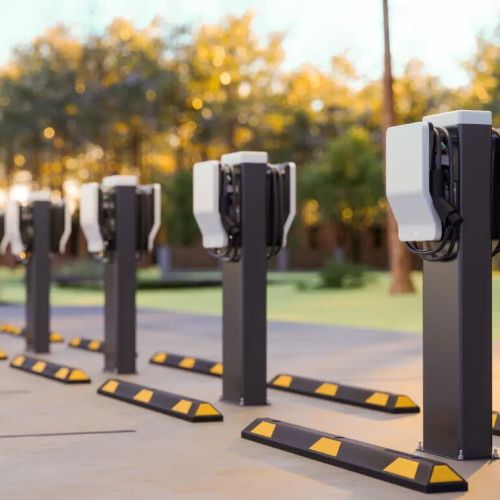


Public EV Charging: What Every Driver Should Know
LiCB Charge is a leading EV charger manufacturer in China, offering reliable AC and DC electric vehicle charging stations along with comprehensive charging solutions.
As electric vehicles (EVs) become increasingly popular, the need for a reliable public charging network is more important than ever. While many drivers charge at home, public EV chargers are critical for long trips, urban living, and those without private parking. These stations are the backbone of a clean, sustainable transportation future.
Public EV chargers are installed in outdoor or semi-public areas—like shopping centers, parking garages, highways, or office parks—where drivers can recharge their vehicles away from home. They are essential for extending vehicle range and offering convenience to both urban and rural drivers.
Home charging is convenient but not always possible, especially for people living in apartments or cities with limited parking. Public chargers support:
Long-distance travel
EV ownership in urban areas
Fleet operations (e.g., rideshare or delivery vehicles)
Sustainable tourism and green infrastructure
A well-distributed network reduces range anxiety and encourages broader EV adoption.
Level 1 (120V AC):
Slowest charging (3–5 miles per hour)
Rare in public spaces; better suited for home or emergency use
Level 2 (240V AC):
Common in public areas like malls, hotels, and offices
Adds 20–30 miles of range per hour
Ideal for locations where vehicles are parked for several hours
DC Fast Charging (Level 3):
Delivers 60–100+ miles in 20–30 minutes
Used for road trips or quick top-ups
Found at highway rest stops, urban hubs, and fleet depots
Knowing which connector your EV supports ensures compatibility:
SAE J1772: Standard for Level 1 & 2 AC charging in North America
CCS (Combined Charging System): Widely used for DC fast charging
CHAdeMO: Older fast-charging standard; used by some Japanese brands
Tesla Connector: Used at Tesla Superchargers; adapters available for other networks
Use apps like PlugShare, ChargePoint, EVgo, Electrify America, or even Google Maps to locate nearby chargers. These apps show:
Real-time availability
Charger types and speeds
Connector compatibility
User reviews and pricing
To charge:
Park in the designated EV space
Plug in the connector
Start the session via app, RFID, or screen prompts
Unplug and move your vehicle once charging is complete
Don’t overstay—free the charger when finished
Avoid unplugging others unless permitted
Report broken stations or blocked chargers
Be mindful of pricing, especially at fast chargers
Use public chargers strategically:
DC Fast Chargers for long trips or emergencies
Level 2 for daily errands or while at work/shopping
Avoid topping up to 100% at fast chargers—charging slows above 80%
Pricing varies:
By time (per minute) or energy used (per kWh)
Some chargers offer flat session rates or idle fees
Businesses may offer free charging as an incentive
Memberships can provide discounts or exclusive access
Governments and private companies are investing in:
Ultra-fast chargers (350 kW+)
Wireless charging systems
Smart energy management and solar-powered stations
Vehicle-to-grid (V2G) technology
Programs like the U.S. NEVI initiative and global green infrastructure plans are driving rapid charger deployment worldwide.
Public EV chargers are a crucial part of making electric driving practical and widespread. Whether you’re commuting, running errands, or on a road trip, public stations ensure your EV stays powered. With growing investment and smart innovation, public charging will only get faster, easier, and more accessible—fueling the road to a cleaner future.Know more about Google SEO Directory
